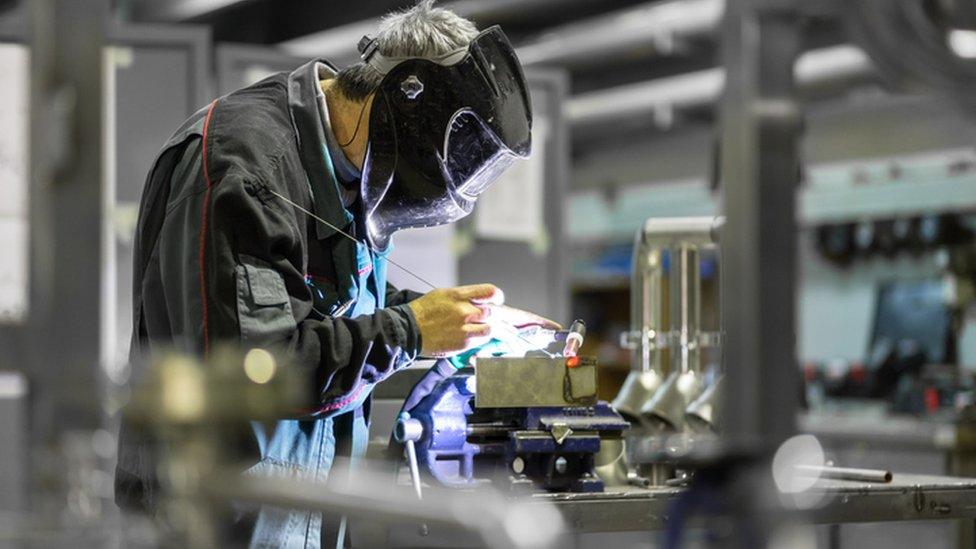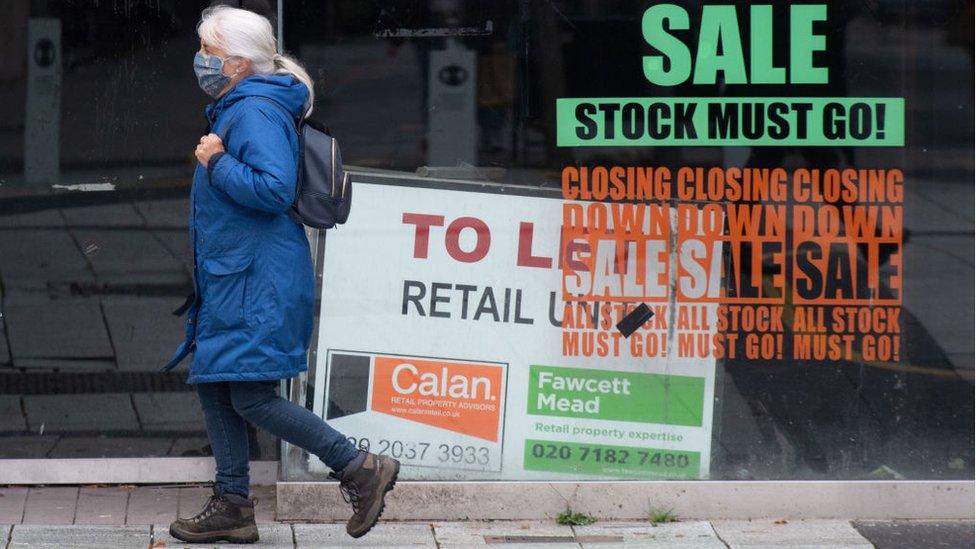Redundancies: Over 10,000 fewer on NI payrolls since March
- Published
- comments

About half of proposed redundancies were in manufacturing, wholesale and retail
More than 10,000 redundancies have been proposed by Northern Ireland firms since March, according to official statistics.
That is the highest number ever recorded.
Northern Ireland's unemployment rate is now 3.9% - 1.6% more than the same time last year and an increase of 0.9% over the quarter.
Companies proposed 1,370 lay offs in November, which is an increase on the previous month.
The total number of proposed redundancies for the last 12 months was 10,720 - more than double the number recorded in the previous 12 months.
About half of proposed redundancies were in manufacturing, and wholesale and retail.
The number of people claiming benefits primarily for the reason of being unemployed also increased to 59,900.
Employee jobs fell to 775,020 in September, marking the third quarterly decrease in a row.
The decline was driven by decreases within manufacturing, services and 'other' industry sectors.
On Tuesday, Ulster Bank published its latest PMI; the monthly survey is generally viewed as a reliable indicator as to how the economy is performing.
It said Covid-19 restrictions in November resulted in a decline in new orders and output, with the retail and services sectors hit hardest.

Construction posted the fastest rate of output growth of all sectors
Richard Ramsey, the bank's chief economist said both those sectors were particularly affected by Covid-19 restrictions and recorded rapid rates of decline in output, orders and employment.
"Once again construction posted the fastest rate of output growth of all the sectors, marginally ahead of manufacturing," he said.
"However, the rates of expansion were modest and represented a marked slowing from construction's recent spurt of activity.
"Local construction firms continue to experience the steepest rises in input costs and as a result are raising prices at their fastest pace since January 2019.
"While business conditions remain challenging, the latest survey highlighted that there is some optimism returning.
"Manufacturing firms are the most bullish about output growth in 12 months' time, followed by construction."
Related topics
- Published13 October 2020

- Published16 November 2021

- Published30 September 2021
